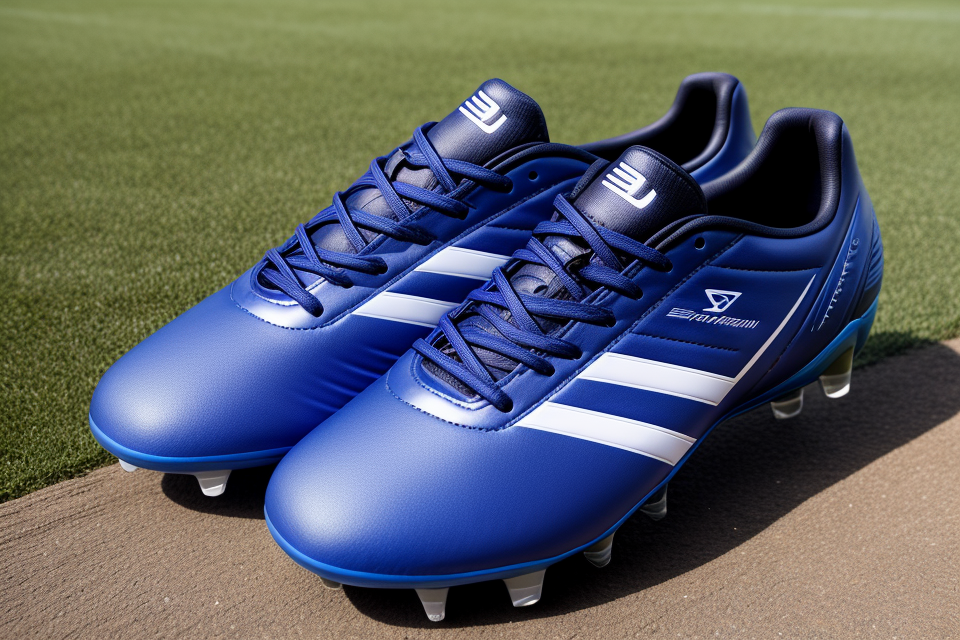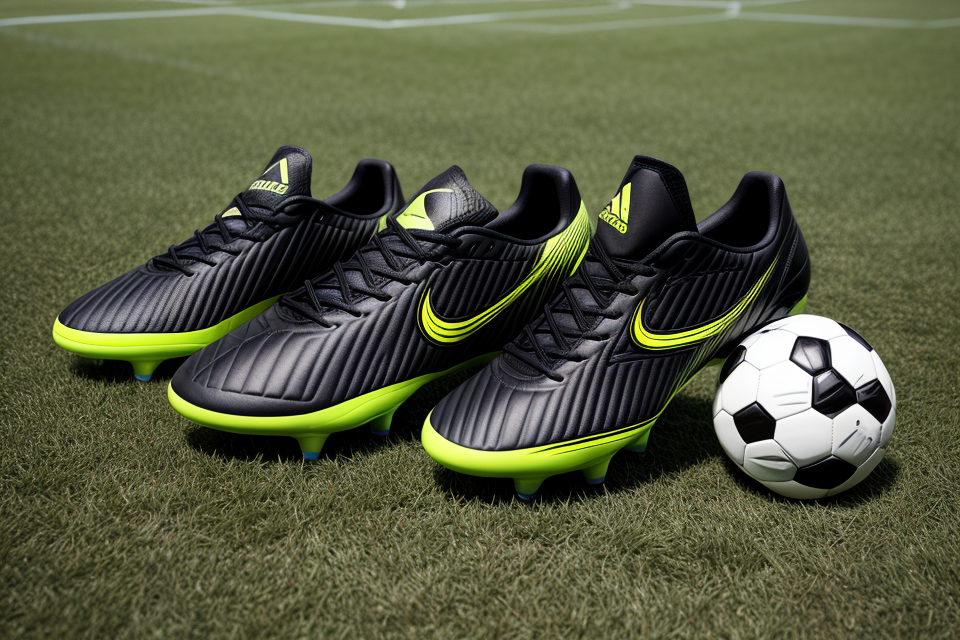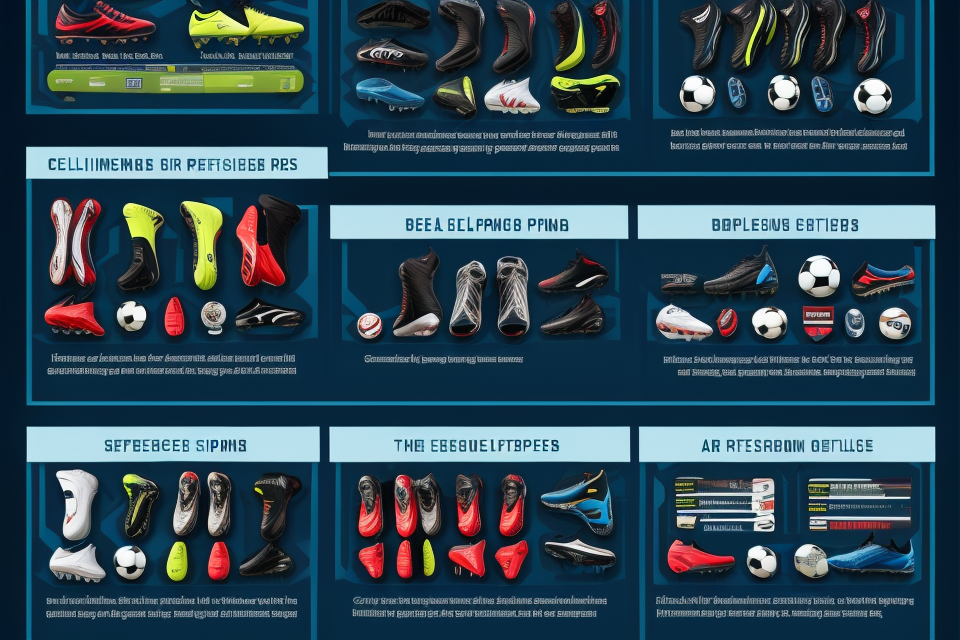Soccer is a sport that requires a lot of running, quick changes of direction, and precise footwork. As such, the shoes that soccer players wear play a crucial role in their performance on the field. One of the most debated topics among soccer players and coaches is whether soccer cleats should feel tight or loose. Some players prefer a snug fit, while others prefer a looser fit. But what is the ideal fit for soccer cleats? In this comprehensive guide, we will explore the pros and cons of both options and provide you with the information you need to make an informed decision. So, whether you’re a seasoned player or a newbie just starting out, read on to find out if a snug fit is essential for soccer cleats.
What is the Ideal Fit for Soccer Cleats?
Factors Affecting Soccer Cleat Fit
Foot shape and size
One of the primary factors affecting the fit of soccer cleats is the shape and size of the player’s foot. A player’s foot shape can vary from being flat, high arched, or neutral, and it is essential to choose a cleat that aligns with the shape of their foot. A proper fit should ensure that the toes are not cramped or pinched, and there is a little wiggle room in the front of the shoe. The size of the cleat is also crucial, as a shoe that is too big or too small can lead to discomfort and affect the player’s performance.
Sock type and thickness
The type and thickness of the socks worn with the soccer cleats can also impact the fit. Some players prefer to wear thin socks, while others opt for thicker socks to provide extra cushioning and support. It is important to consider the thickness of the socks when selecting the size of the cleat, as a thicker sock can affect the fit and feel of the shoe.
In-shoe lacing system
The in-shoe lacing system of the soccer cleat is another critical factor to consider when determining the ideal fit. Different cleats have different lacing systems, and some may be more suitable for certain foot shapes or preferences. For example, some players may prefer a lace-up cleat for a more customizable fit, while others may prefer a slip-on cleat for a more secure and convenient fit.
Foot swelling during play
Finally, it is essential to consider the possibility of foot swelling during play. As the feet can swell during intense physical activity, it is crucial to choose a cleat that can accommodate for this. A snug fit is ideal to prevent the cleat from becoming loose or causing discomfort, but it is also important to ensure that there is enough room for the foot to expand without causing pressure or blisters.
Personalizing Your Soccer Cleat Fit
- Properly sized and fitted cleats
- Wearing appropriate socks
- Gradual break-in period
- Regularly monitoring and adjusting fit
When it comes to personalizing your soccer cleat fit, there are several key factors to consider. First and foremost, it’s important to ensure that your cleats are properly sized and fitted. This means selecting a pair of cleats that are neither too tight nor too loose, as either of these can negatively impact your performance on the field.
In addition to selecting the right size, it’s also important to wear appropriate socks when playing in your cleats. Wearing the wrong type of socks can cause discomfort and may even lead to blisters or other foot problems. Opt for socks that are specifically designed for soccer and that offer adequate support and cushioning.
Another important factor to consider when personalizing your soccer cleat fit is the gradual break-in period. New cleats can often feel stiff and uncomfortable at first, but with time and wear, they will eventually mold to the shape of your foot. It’s important to allow yourself enough time to break in your cleats before wearing them for an important game or match.
Finally, it’s crucial to regularly monitor and adjust your cleat fit as needed. Your feet can change in size and shape over time, and it’s important to ensure that your cleats continue to fit properly. Be sure to check your cleats before each game or practice and make any necessary adjustments to ensure optimal comfort and performance.
Benefits of a Snug Fit in Soccer Cleats
Enhanced Performance
Improved Ball Control
A snug fit in soccer cleats is crucial for improved ball control. Tight-fitting cleats allow for better feel and touch of the ball, enabling the player to make precise movements and control the ball with ease. This is especially important for players who need to make quick decisions on the field and execute accurate passes or shots.
Faster Acceleration and Changes of Direction
A snug fit in soccer cleats also leads to faster acceleration and changes of direction. Tight-fitting cleats provide better support and stability, allowing the player to move quickly and change direction without losing balance. This is especially important for players who need to make quick cuts and moves to evade defenders or get into scoring positions.
Superior Stability and Balance
A snug fit in soccer cleats results in superior stability and balance. Tight-fitting cleats provide better support and control, allowing the player to maintain balance and stability even on uneven or slippery surfaces. This is especially important for players who need to make quick movements and changes of direction while maintaining their balance.
Overall, a snug fit in soccer cleats is essential for enhanced performance on the field. It allows for improved ball control, faster acceleration and changes of direction, and superior stability and balance, giving players the edge they need to excel in the game.
Reduced Injury Risk
- A snug fit in soccer cleats can significantly reduce the risk of ankle sprains and other foot-related injuries. When the cleats fit properly, they provide the necessary support and protection for the foot, minimizing the chances of rolling, twisting, or turning the foot in a way that can cause injury.
- The proper fit also helps prevent excessive foot movement within the cleat, which can lead to discomfort, blisters, and other foot problems. A snug fit keeps the foot in place, allowing the player to focus on the game without worrying about their footwear.
- Furthermore, a snug fit helps to reduce the risk of impact injuries, such as those that can occur when an opponent steps on a player’s foot or when a player lands awkwardly after a jump. A well-fitting cleat provides cushioning and shock absorption, which can help to absorb the impact and prevent injuries.
- In addition, a snug fit can also help to prevent overuse injuries, such as plantar fasciitis, which can develop from repetitive movements and poor foot mechanics. A proper fit can help to ensure that the foot is properly aligned and that the player is using the correct foot mechanics, which can help to prevent these types of injuries.
- Overall, a snug fit in soccer cleats is essential for reducing the risk of injury. It provides the necessary support, protection, and cushioning to keep the foot safe and comfortable during play. By investing in a good pair of well-fitting cleats, players can minimize their risk of injury and focus on the game.
Drawbacks of Overly Tight Soccer Cleats
Discomfort and Reduced Blood Flow
Wearing soccer cleats that are too tight can cause discomfort and reduced blood flow to the feet. When the cleats are too tight, they can restrict the blood vessels in the feet, leading to reduced circulation and numbness. This can make it difficult for the player to feel the ball and the ground, which can lead to decreased performance and an increased risk of foot injuries.
Furthermore, when the blood flow to the feet is restricted, it can make it difficult for the player to move and change direction quickly, which is essential in soccer. The reduced blood flow can also cause cramping and discomfort during the game, which can further hinder the player’s performance.
Additionally, wearing soccer cleats that are too tight can cause pressure on the nerves in the feet, which can lead to numbness and tingling. This can be particularly problematic for players who rely on their feet to make quick decisions on the field.
In conclusion, wearing soccer cleats that are too tight can cause discomfort and reduced blood flow to the feet, which can lead to decreased performance and an increased risk of foot injuries. It is important for players to ensure that their cleats fit properly to avoid these issues.
Overcorrection and Injury
Overly tight soccer cleats can lead to overcorrection and injury in several ways. Firstly, improper foot support and alignment can cause stress fractures and other overuse injuries. This is because the constant pressure and friction on the foot can cause damage to the bones, ligaments, and tendons over time.
Moreover, a snug fit that is too tight can reduce the effectiveness of protective features built into the cleats. For example, if the cleats are too tight, the plastic or metal plate that provides impact protection may not be able to move freely, which can lead to a loss of cushioning and support. This can increase the risk of injury, especially in high-impact collisions or tackles.
Furthermore, overly tight soccer cleats can also cause numbness or tingling in the toes and feet, which can lead to decreased sensitivity and control. This can be particularly problematic for players who rely on their feet to make quick decisions and movements on the field.
Overall, it is essential to find the right balance between a snug fit and a comfortable fit when choosing soccer cleats. While a snug fit can provide better support and control, overly tight cleats can lead to overcorrection and injury, which can be detrimental to a player’s performance and health.
How to Ensure a Proper Soccer Cleat Fit
Step-by-Step Guide
Ensuring a proper fit for your soccer cleats is crucial for optimal performance and preventing injuries. Here is a step-by-step guide to help you achieve the right fit:
- Properly measure your foot and use the cleat size chart: The first step in getting the right fit is measuring your foot accurately. Use a soft measuring tape or a printable foot template to measure the length and width of your foot. Consult the soccer cleat size chart to determine your correct cleat size. Keep in mind that soccer cleats run small, so it’s essential to go for a size that’s slightly larger than your actual foot size.
- Try on cleats in the afternoon, when your foot is at its largest: Your foot swells throughout the day due to natural fluid buildup. Try on cleats in the afternoon when your foot is at its largest to ensure a snug fit. This will help you choose the right size and minimize the risk of blisters or discomfort during the game.
- Check fit with both feet and choose the tightest-fitting cleat: Your feet may have slight differences in size and shape, so it’s essential to check the fit with both feet. Choose the cleat that fits the narrower foot more snugly, as it will provide better support and stability during play.
- Ensure proper lacing and a snug fit around the instep and heel: Proper lacing is crucial for a secure fit. Ensure that the laces are tight around the instep and heel, providing a snug fit without being too restrictive. Avoid lacing styles that may cause discomfort or lead to foot movement inside the cleat.
- Wear appropriate socks and break in cleats gradually: Wearing appropriate socks is vital for a comfortable fit. Choose moisture-wicking socks that provide good support and cushioning. Break in your cleats gradually by wearing them for short periods during practice or games. This will help your feet adapt to the new shoes and minimize the risk of blisters or discomfort.
- Regularly monitor and adjust fit as needed: Your feet can change in size and shape over time, so it’s essential to monitor the fit of your soccer cleats regularly. If you notice any discomfort or feel that the cleats are too loose or too tight, adjust the laces or consider getting a new pair of cleats.
By following this step-by-step guide, you can ensure a proper soccer cleat fit that will provide optimal support, stability, and comfort during games and practices.
FAQs
1. What is the ideal fit for soccer cleats?
The ideal fit for soccer cleats should feel snug but not too tight. It’s important to have a little bit of room in the toe box for your toes to move around, but not so much that your feet feel loose inside the shoe. A good rule of thumb is to buy a half size smaller than your normal shoe size to ensure a snug fit.
2. Should soccer cleats feel uncomfortable?
Soccer cleats should not feel uncomfortable. If they do, it’s likely that they’re too tight or the wrong size for your feet. A snug fit is important for support and control on the field, but discomfort can lead to blisters, foot pain, and even injuries. Make sure to try on multiple sizes and styles to find the perfect fit for your feet.
3. How do I know if my soccer cleats are the right size?
To determine if your soccer cleats are the right size, you should first measure your feet. Wear the socks that you’ll be wearing during games when you measure your feet to ensure an accurate fit. Next, try on the cleats and walk around to see if they feel comfortable and supportive. If you have any doubts about the fit, it’s best to err on the side of caution and go for a smaller size.
4. Can I break in soccer cleats?
While some soccer cleats may be more comfortable right out of the box, many players find that they need to break in their cleats before they feel comfortable on the field. To break in your cleats, try wearing them for short periods of time and gradually increasing the duration of wear. You can also try wearing thicker socks or using foot cream to help with the break-in process.
5. How often should I replace my soccer cleats?
Most players replace their soccer cleats every 6-12 months, depending on how often they play and the condition of their shoes. If you notice that your cleats are showing signs of wear, such as flattened studs or worn-down materials, it’s time to replace them. Worn-out cleats can increase your risk of injury and reduce your performance on the field.


